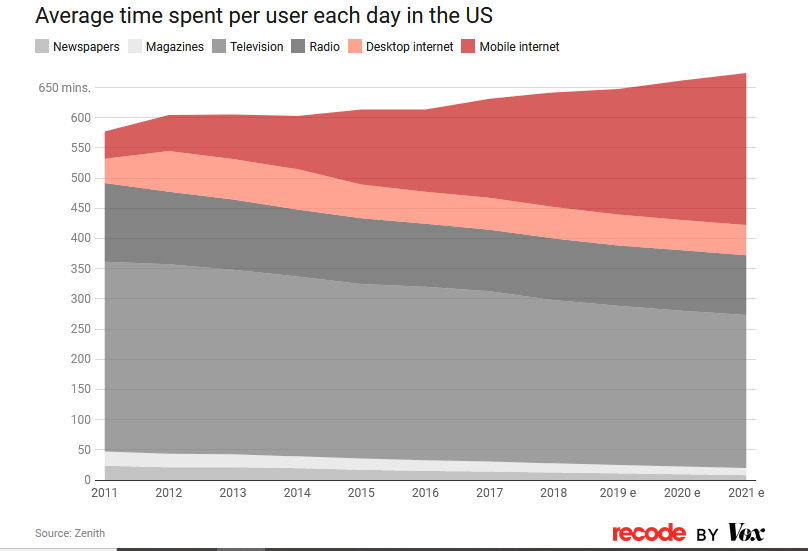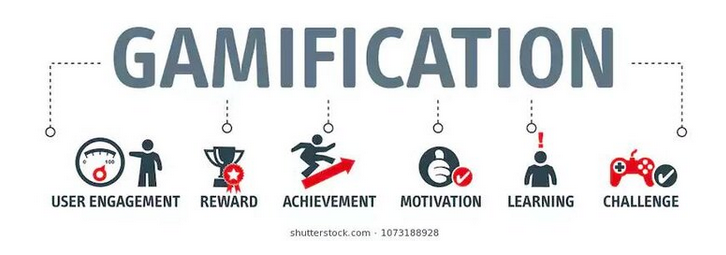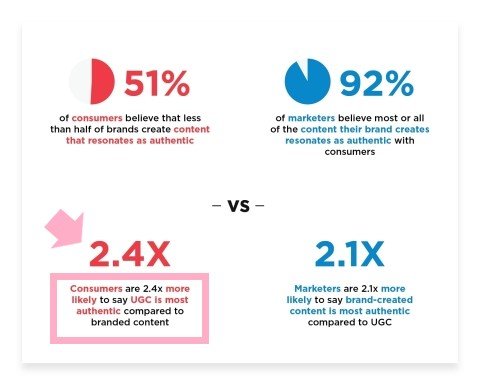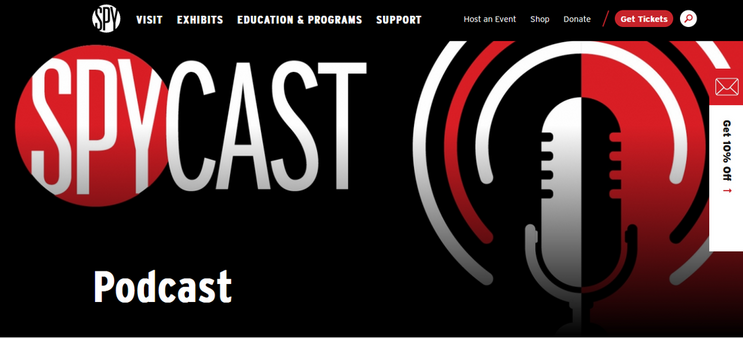How to Make Museums More Interesting: Top 9 Museum Marketing Trends to Follow
The pandemic has negatively impacted the economic stability of museums.
In 2020, museum attendance dropped by 77% worldwide. Lockdowns forced cultural institutions to stay closed most of the year and even after their reopening, social-distancing measures limited them to 20-30% of their capacity.
With a gradual recovery starting in 2021, the number of visitors grew, with the top 100 most popular art museums in the world hitting 71 million visitors and a 31% rise.
However, overall figures are still 69% lower than pre-pandemic levels. (The biggest museums used to reach 230 million visitors a year!)
So, how can you encourage people to visit museums? How do you engage them and raise awareness?
Successfully marketing an art institution is not an easy path.
But if you have the right strategy in place and use creative ways to connect with prospective visitors online, you’ll run a good chance of standing out in the industry and bringing in your audience all year round!
Let’s explore nine of the best trends in museum marketing that will help you increase your attendance rate and create new revenue streams.
The Top 9 Online Museum Marketing Trends
Fact: museums are an industry.
As such, they need to properly build their brand identity, reputation, and online presence.
This means that if you want your museum to be seen as an authority and ensure longevity, you have to nurture strong relationships with your target audience. The whole perception of your image depends on how visitors see you, interact with you, and remember you.
Driving engagement is what makes a museum successful.
When you have clarity on how to promote museums, you consistently attract existing and new visitors, including those categories - like millennials - that are the hardest to reach.
Take inspiration from these nine museum marketing ideas to grow your museum not only as an educational organization, but also as an entertainment destination.
Let’s dive in!
Smartphone Era
Your museum website must be mobile-friendly.
The time spent on digital devices is radically growing, with mobile accounting for approximately half of online traffic worldwide.
Stats indicate that…
In the fourth quarter of 2021, mobile devices (excluding tablets) generated 54.4% of global website traffic. (Statista)
The overall time Americans spent on various media grew to nearly 11 hours per day in 2020, with mobile internet usage being responsible for the entirety of that growth. (Vox)
Consumers are increasingly getting mobile-savvy and expect companies to provide a good user experience.
In fact, 88% of online consumers are less likely to return to a site after a bad experience, and 85% of adults think that a company’s website when viewed on a mobile device should be as good or better than its desktop website.
Ask yourself, is your museum website mobile-focused? What’s your mobile presence like?
Common mistakes when overlooking a mobile-friendly marketing strategy:
Website pages and campaigns are not optimized for mobile devices.
Your mobile site is too content-heavy. (Keep your content short, snappy, and to the point.)
Slow loading website.
No ad personalization. (Tailor ads to consumers’ online preferences and habits.)
Unclear CTAs. (Adopt concise wording to convey the right message to users.)
Protip: use Google’s mobile friendly test to check if a single website page meet the right criteria for mobile usage. A good alternative to it is the mobile-friendly test tool Experte which automatically crawls multiple URLs all at once.
Museums like the Met, Guggenheim, and Springfield Museums have fully embraced the “Smartphone Era” as a new, effective way to make art more accessible to the public.
Staying competitive, being strategic, and enhancing the enjoyment of art on mobiles are some of the key reasons that led many museums to a website rebranding.
In a digitally-oriented world, mobile marketing is therefore a valuable opportunity to:
Grow brand awareness.
Increase engagement.
Generate conversions.
Improve Google rankings.
Get higher ROI.
2. Virtual Experiences
More and more institutions consider virtual reality one of the most effective museum marketing trends to increase engagement and make art globally accessible.
Look at these stats:
The augmented reality (AR) and virtual reality (VR) market is expected to rise to over $250 billion by 2028. (Statista)
52.1 million people in the US used VR at least once per month in 2020, and 23 million jobs will be using AR and VR for several purposes by 2030.
This type of technology is rapidly evolving and will continue to gain traction among consumers and businesses in the future - museums included.
VR experiences, like virtual tours, are certainly not new to the museum world. But during the pandemic, they provided an innovative way to educate visitors and keep them engaged.
Benefits of VR:
It brings museum collections, scenes, and stories to life.
It facilitates the understanding of the artworks and their context.
It enables visitors to be actively involved in an exhibition.
It helps museums create original forms of storytelling and reach wider audiences.
The question is: does VR fully replicate the emotional experience of a real-life visit?
According to a recent experiment measuring people’s emotional response to a virtual museum setting, there isn’t a significant difference between a virtual and in-person exhibit.
VR technology aims to enhance what already exists in a museum. (Don't use it for the sake of it but rather for creating something memorable and inspiring for the public.)
“We’ve learnt you can create new forms of art and new ways of immersive storytelling in VR. You can unlock the power of collections and reach people in places where you couldn’t previously.”
The National Gallery of Prague is one of those museums boosting their audience engagement with VR:
In 2018, the museum launched “Touching Masterpieces,” an unprecedented project that allowed visually impaired and blind visitors to “touch” iconic sculptures with haptic Avatar VR gloves.
3. Mobile Gaming
How do you make museums more interesting?
The answer is games!
Incorporating play and games into your educational programs and exhibits is one of those inventive museum marketing trends to increase audience engagement - especially mobile games.
The number of active mobile gamers worldwide is over 2.2 billion, with mobile gaming expected to reach $272 billion by 2030.
China is worth more than 25% of the world’s mobile games market. (Niko Partners)
Cultural settings already adopt game-based learning as an effective education tool for young audiences and adults. But with mobile games, you have the chance to promote yourself and grow your online brand identity more innovatively!
Best practices to use mobile gaming in your museum:
Set clear goals to create quality games that stimulate learning.
Focus on the target audience you want to develop the game for.
Keep it simple and fun to provide the best gameplay.
Make games available on your museum’s website and gaming portals.
Work with agencies who know how to make good games.
“Many games help develop practical skills, serve as a form of exercise, or otherwise perform an educational, simulationional, or psychological role.”
Screenshot from: Shutterstock
Gamification - the process of applying game elements to non-game-related contexts like museums - fosters a deep connection with visitors by blending education and entertainment.
Here’s a mobile games idea from the Australian National Maritime Museum:
In 2016, the museum launched “The Voyage,” an online game based on the early 19-century convict voyages. Within one year, over 63,000 people played the game; the engagement rate increased, with 45% repeat players; and UK schools started using the game for educational purposes.
4. Social Media Video Platforms (Instagram, TikTok, and YouTube)
Social media networks have opened museums to new, engaging forms of communication and interaction with the audience.
In this context, videos are seen as one of the most effective museum social media trends to promote and enhance your brand.
86% of businesses already use this format and 92% of marketers value video as an ‘important part’ of their marketing strategy. (Wyzowl)
In particular, short videos stand out for generating the highest ROI of any social media marketing strategy, with 31% of marketers investing in it more than any other trend in 2022. (Hubspot)
It comes with no surprise that Instagram, TikTok, and YouTube now cater to short-form clips.
Trending TikTok videos, Instagram Reels, and YouTube Shorts showcase new forms of content that attract diverse audiences around the world like social challenges, fun dances, quick tips, and more.
A few stats:
64% of Instagram users lie under the age group of 34.
TikTok passed the 1 billion monthly active user figure at the end of September 2021.
YouTube Shorts globally receives over 15 billion daily average views.
Invest your time and energy in this format to have a leg up on staying relevant to your audience and producing the best museum social media campaigns - even with tight budgets!
Before choosing a social media video platform:
Set up your goals. (What are you hoping to accomplish with short-form video content?)
Produce relevant video content for your ideal visitors. (Who in your audience needs to see it the most?)
Focus on the right channel for the right target audience. (What channels are your audiences actively using and what for?)
5. User-Generated Content
One of those museum marketing trends that help you access new audiences and increase visibility is UGC or User-Generated Content. It involves authentic, brand-specific content created by users (images, videos, reviews, testimonials, etc.) and published on social media or other channels.
UGC is the modern-day word of mouth that motivates people to connect with you and build trust. Consumers are, in fact, 2.4 times more likely to view user-generated content as authentic compared to content created by brands. (Businesswire)
Here’s why to include UGC into your museum marketing strategy:
It increases engagement and conversions.
It humanizes your brand by putting your audience’s experiences first.
It’s a powerful tool for storytelling.
It helps you promote your services and drive more sales.
Reposting and sharing UGC content on your museum’s social media and website or in ads (with permission) is a great way to enhance your online visibility and boost people’s participation - just be creative in the process!
When using UGC:
Set clear goals.
Understand the types of content you need from your visitors/customers.
Request permission and credit the original creators.
Align your UGC campaign with your existing marketing objectives.
Measure, analyze, and keep track of your results with UGC tools like Mediatoolkit or Yotpo.
6. Influencer Marketing
Of all the best museum marketing trends listed so far, influencer marketing is considered a surefire method to increase audience engagement and expand your reach.
80% of marketers find influencer marketing effective, and 89% say ROI from influencer marketing is comparable to or better than other marketing channels. (Mediakix)
Plus, 89% of marketers believe Instagram is the most popular platform for influencer marketing. (Statista)
This type of marketing, also known as branded content, consists in promoting a marketing campaign (about events, services, products, etc.) by working with social media influencers who share your brand values and have engaged niche audiences.
Influencers have a unique ability to connect with their followers: it’s not the fame or celebrity that sets them apart, but rather the personal, trustworthy, and genuine interactions they have with their community.
As a museum, your main goal is to convert target audiences into repeat visitors. So, why not partner with influencers to address a small but dedicated market that is potentially interested in what you offer?
Choosing among the different types of social media influencers out there isn’t easy. That’s why you need to have a clear strategy:
Determine your goals to reach new target audiences.
Research the right influencer based on your brand identity and who you’re trying to influence.
Abide by the rules of your country when making an agreement with influencers (e.g. in the US, rules come from the Federal Trade Commission).
Consider the relevancy, reach, and engagement rate of your potential influencers.
Make a list of your choices and reach out privately (be personal, not salesy!).
Collaborate with your influencer in the creation of valuable, organic content.
Measure your results.
7. Blogging
With almost 5 billion people currently connected to the internet, there’s never been a better time to include blogging in your museum marketing strategy.
The benefits are endless, from driving more traffic to your website to helping promote your services, grow brand awareness, and nurture your audience.
Blogging is so scalable and affordable that it’s considered the third most common content marketing strategy for businesses - it’s not a case that those who use blogging for marketing purposes see 13 times the ROI of companies that don’t. (SEMrush)
However, most museums don’t have a blog and those who do don’t use it properly. (Cuberis)
That’s a bummer!
If you don’t have a blog yet or you don’t update your existing blog consistently, you’re missing out on a great chance of skyrocketing your business.
A comprehensive, high-quality blog opens your museum to new possibilities:
It attracts visitors to your collections, programs, and services organically.
It enhances the appreciation and understanding of your objects.
It highlights aspects of your museum that aren’t always accessible (e.g. hidden gems, the behind-the-scenes of an exhibit, the restoration of an artwork, etc.).
It helps you address people’s needs and questions through valuable, long-form content.
When you build an effective blog strategy that includes your mission, target audience, SEO goals, and compelling, shareable content, you’re one step closer to success - no matter the size or budget of your institution!
Look at these examples:
1. North Carolina Museum of Art
The NCMA blog, Circa, has the look and quality of a professional online periodical. The magazine approach is intentional, having roots in the museum’s member magazine.
2. Houston Museum of Natural Science
Beyond Bones blog makes a great use of storytelling by connecting the museum’s collections to the audience through engaging content.
8. Podcasting
Nowadays, one of the most promising museum marketing trends is podcasting.
Its popularity is growing fast, with over 120 million people listening to podcasts regularly in the US alone.
2 million podcasts are registered on Google and the number of podcast listeners is rising across 18 countries.
Despite its growth, the industry isn’t saturated yet. This makes podcasting an open-door space for potential growth and worthwhile investments (43% of content marketers keep investing in podcasts and 51% plan to invest even more in 2022).
Delivering top-quality audio content for your museum podcast is a sure way to:
Reach your target audience.
Raise curiosity for what you offer.
Increase brand awareness.
Build trust and establish an authoritative presence.
Maximize the engagement with educational, entertaining, and diverse topics.
Podcasts are a simple, cost-effective marketing tool to interact with the public everywhere and make your museum more accessible online.
Screenshot from: Nielsen
Some museums have already jumped on this trend and got successful results:
1. National Gallery of Art
The Sound Thoughts on Art podcast from the NGA of Washington explores the intersection of sight and sound. Every episode focuses on an artwork of the museum’s collection, highlighting how we experience art through our senses and how it connects us.
2. International Spy Museum
Known as the podcast real spies listen to, SpyCast offers weekly episodes on all things espionage and secret intelligence, including insightful interviews with authors, scholars, and ex-spies.
9. NFTs
NFTs, literally Non-Fungible Tokens, are gaining popularity in the art world as they represent the new way of buying and selling digital artworks - typically with cryptocurrency.
They’re tradable digital assets representing real-world objects like art. What sets them apart from most online creations is that they’re one of a kind and have unique identifying codes that make them exclusive. (A copy of an image is distinguished from other copies for the metadata each NFT token contains.)
The shift to virtual experiences and immersive technologies makes it clear that NFTs will be part of the cultural and financial technology industries in the near future.
Although their role is still widely disputed, NFTs are one of those museum marketing trends that many institutions are adopting to educate the public, engage their audiences, and increase sales revenue.
Museums have started navigating the world of NFTs in different ways:
1. Los Angeles County Museum of Art
LACMA’s Art + Technology Lab presents a series of articles and talks about the museum’s future with NFTs. The program aims to educate the audience on this emergent topic through informative conversations with museum experts.
2. The Uffizi
Due to the financial challenges caused by the pandemic, The Uffizi Gallery has turned some of its most famous Renaissance artworks into NFTs to raise funds and generate revenue. The museum started this in 2021 by selling an NFT of Michelangelo’s painting “Tondo Doni” for €140,000 ($170,000).
3. San Jose Museum of Art
Premiered at SJMA’s 2021 Gala + Auction, the NFT work by Rashaad Newsome was commissioned by the museum for the event and remained accessible through the website until October 2021 as part of the museum’s collection.
Ready to Boost Your Marketing Strategy With These Top 9 Museum Marketing Trends?
Promoting your museum online has its pitfalls.
Connecting with the public, building valuable relationships, and being seen as a beacon of inspiration by the audience requires time, hard work, resources, and - most importantly - a strategic mindset.
You need to have a well-structured strategy around which to build consistent, top-notch content that resonates with people’s desires and expectations - remember, this is the cornerstone of your marketing success!
But there’s one more ingredient to add to the recipe: creativity.
You don’t need the whopping budget of the MET or the notoriety of the British Museum to make your institution engaging.
With a bit of creativity, you’ll find new opportunities to…
Leverage your digital presence.
Expand your reach.
Increase your audience attendance rate.
Grow your income.
Consider the top 9 museum marketing trends listed here as a kick-start to maximize your business strategy and enhance your visibility in outstanding, inventive ways.
Step by step you CAN and you WILL achieve this!
The sky's the limit, as they say. 🚀

























